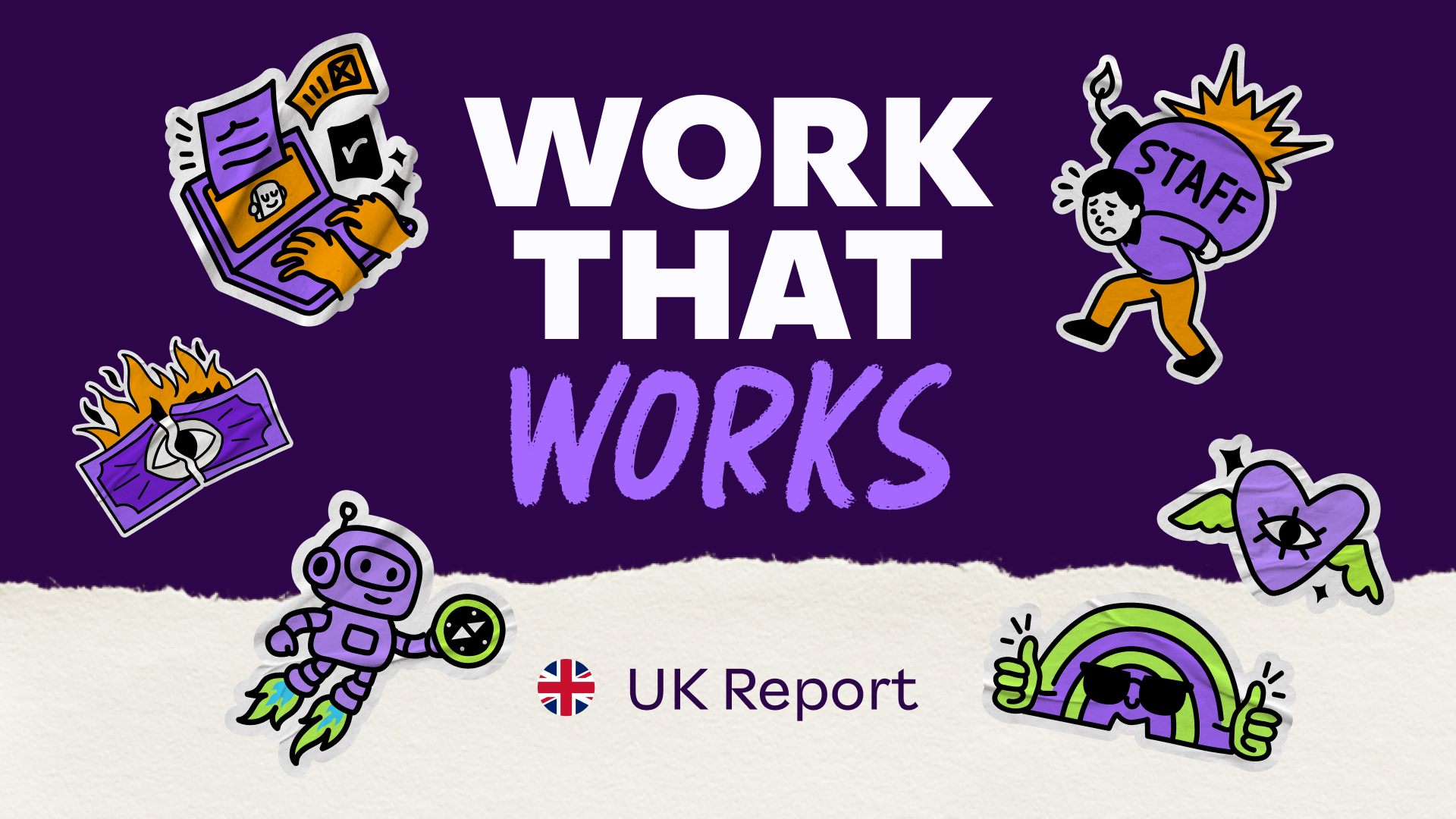Work Health and Safety Policy Template
Published
Work Health and Safety Policy Template
As a business leader or HR professional, you have an obligation to keep your team safe and healthy while they’re in the workplace. This means that as much as reasonably practicable, you need to make sure people are not put at risk while working.
That’s why having a work health and safety (WHS) policy template is crucial for any business. Download our free and fully customisable WHS policy template and use it in your workplace today.
About this work health and safety policy template
What’s included in the example WHS policy template
This work health and safety policy template outlines WHS duties and responsibilities to help keep employees safe, and your business compliant. The template includes:
- Employer commitments to health and safety
- Employee and contractor responsibilities
- Details of what to do where there is an incident or accident at work
The objectives of this document are to as far as reasonably practicable:
- Achieve a safe and incident-free workplace
- Consider WHS in project planning and work activities
- Involve workers and subcontractors in the decision-making process through regular communication and consultation
- Ensure workers and subcontractors identify and control risks in the workplace
- Monitor and review the elimination or control of potential risks
Who should use this policy template?
The WHS policy template is ideal for:
- Business owners
- HR professionals
- Operations or compliance managers
What is a work health and safety policy?
A health and safety policy is a formal document that defines a businesses approach to creating a safe and healthy working environment for their employees. It outlines the responsibilities, systems and procedures they have in place to manage risks and safeguard the wellbeing of employees, contractors and visitors.
The purpose of a HSE policy
The purpose of having a work health and safety policy is to:
- Ensure legal compliance: Having a document in place helps businesses to meet their legal obligations under the Health and Safety at Work etc. Act 1974.
- Support risk management: Empowers businesses to take a proactive approach to risk management, reduce incidents, and minimise the likelihood of accidents and work-related illness.
- Establish responsibilities: Clearly defines who is responsible for managing WHS at all levels of the business.
- Define the approach: Helps to outline the systems and processes a business has in place to identify and control workplace hazards.
- Promote a safety culture: Being transparent about a HSE policy template encourages safe behavior, raises awareness of risks and fosters a culture where health and safety is on the forefront of everyone’s minds.
Is it a legal requirement in the UK?
A written health and safety policy is a legal requirement for most businesses in the UK. Under the Health and Safety at Work etc. Act 1974, and more specifically the Management of Health and Safety at Work Regulations 1999, most employers must have a written health and safety policy that outlines their approach to managing workplace health and safety.
It’s important to note that requirements are dependent on the size of your business.
Fewer than 5 employees:
- Businesses that employ less than 5 members of staff do not legally need a written policy. However, they are still required to have processes in place and communicate those to team members.
5 or more employees:
- Businesses with 5 or more employees must have a written document.
- The health and safety policy template should include a statement of intent, details of responsibilities, and the arrangements in place to manage risks.
- The health and safety policy template should be regularly reviewed and changes communicated to the team.
How to approach health and safety at work
Luckily for you, making sure your business stays compliant is what Employment Hero does best. Our employee management tool has many policy templates readily available for your business to use.
When thinking about health and safety at work you need to consider the following things:
Assess potential risks and hazards
Even if you work in an office, there are still things that can go wrong (ever burnt your hand using the boiling water tap? We rest our case).
You need to take into consideration all those things that could go wrong and what the potential consequences could be. You should also think about how serious those consequences could be and the likelihood of this scenario playing out. For example, in the hospitality business, accidents in the workplace such as cuts and burns will occur a lot more regularly. In construction, you have a lot of people working with very heavy tools and dangerous equipment on-site which could cause lots of health and safety risks if not used correctly.
Provide training and resources
Once you’ve identified the risks, you need to think about what you can reasonably do to prevent them from happening and then make those changes inside your business. It might be introducing additional training, advice, or resources related to WHS or putting up signs to constantly remind people to be vigilant. Whatever it takes, keep trialling new methods to make sure your employees are safe at work.
Collect feedback from employees
Talking to your staff and asking for feedback on what they perceive as a safety risk is a really good opportunity to understand your business better. Encourage staff members to share their suggestions and brainstorm about how you can create a better working environment. You’ll also have people buy into your WHS approach before you even start.
Health and safety requirements
As a business owner, leader or HR professional there are certain WHS requirements you must abide by. These include:
Have the right workplace facilities
All businesses must maintain a safe and healthy workplace and provide adequate welfare facilities such as access to toilets and washbasins, drinking water and having somewhere to rest and eat meals.
Have access to first aid
First aid is also a requirement, and as a business you must ensure:
- All workers have access to adequate first aid, this generally means ensuring they can access a suitably stocked first aid kit and have an ability to call an ambulance in an emergency.
- There is an appointed person or people to take charge of first aid arrangements (can be you).
- Information is provided to all workers telling them about first aid arrangements.
Display the health and safety law poster or provide leaflet
You must either:
- Display the Health & Safety Executive’s health and safety law poster where your workers can easily read it.
- Provide each worker with the equivalent health and safety law leaflet.
Appoint a competent person
You must appoint a competent person or people to help you meet your health and safety legal duties. This could be yourself, or another member of staff.
How do you manage a WHS incident?
Despite your best efforts, accidents can and do still happen. With that in mind, you should also include in your health and safety policy what to do if there is an incident or accident at work. This will ensure if the worst case does arise, everyone is prepared.You will need to specify:
- What immediate actions should take place;
- Who in the business needs to be notified and when;
- If/when you need to notify the Health & Safety Executive.
You should also have a process on how employees can record incidents, and you should regularly review these events to make sure the working environment remains safe.
Mental health in the workplace
Your business also has an obligation to take care of the mental health of your staff as far as practically possible. This includes preventing bullying, harassment and discrimination at work. We would recommend sending a clear message that these behaviours won’t be tolerated in the workplace by having separate policies to deal with bullying, harassment and discrimination including a contact person to bring these issues up with confidentially if you don’t have a dedicated HR person inside your business.
According to the Mental Health Workforce Report:
- Only fifty-five percent of employees at a typical UK workplace feel that their organisation genuinely prioritises wellbeing.
- Employees across the UK are expecting more wellbeing support from their employers.
- Nearly half (45%) of employees also say they don’t look forward to coming to work.
This shows just how important a work health and safety policy is to your business. You have a duty to make sure your employee wellness is checked. A good tip for this is to introduce an Employee Assistance Program (EAP) to help employees manage their mental health.
Review your WHS policy regularly
Once you’ve got this outstanding company policy in place, make sure you review it regularly. WHS isn’t a set-and-forget activity. You should continuously be reassessing the risks that are involved in your business and coming up with new strategies to help make the place of work as safe as possible.
Work Health and Safety Policy FAQs
I have a small number of employees. Do I need to write my workplace health and safety policy down?
By law, if you have fewer than 5 employees, you don’t need to write down your workplace health and safety policy. But, it’s still considered best practice to have a written document as it:
- Clearly communicate your approach to health and safety
- Show evidence of compliance if ever inspected by the Health and Safety Executive (HSE).
- Provide clarity and consistency, especially if your team grows
Do I need to display my health and safety policy?
In the UK, there’s no legal requirement to display the full policy. But, you must share it with your employees in a way that they can easily understand and refer back to.
Where should health and safety policies be displayed?
As mentioned above, you don’t have to display the full policy, but it does need to be accessible.
Here’s how you can make it accessible.
- Employee Handbook: Include it in printed or digital versions.
- Company Intranet or Shared Drive: If you use digital systems, upload it where staff can access it.
- On a Noticeboard: Consider posting the policy in a communal area.
- During Induction and Training: Make sure new employees receive and understand the policy.
Stay WHS compliant with Employment Hero
Staying compliant is essential for any business, and having a robust WHS policy is part of that. But we get it, as a business owner or HR professional, it can be hard to keep up with all compliance documents.
This is where Employment Hero’s Employment Operating System comes in handy. It takes the traditional isolated aspects of employment and integrates them into a seamless, human and AI-powered solution that empowers employers, employees and job seekers alike.
Get access to policies, receive HR compliance advice from our HR Advisory team, find and hire top talent with SmartMatch, seamlessly onboard new hires, automate complex payroll, drive employee engagement and more!
Related Resources
-
 Read more: Work that Works: Unlocking Productivity in 2025
Read more: Work that Works: Unlocking Productivity in 2025Work that Works: Unlocking Productivity in 2025
3rd July, 2025 1:00pm BST UK productivity has been puzzling experts for years. But what’s really driving productivity in SMEs…
-
 Read more: What is Structured Workplace Learning? A Comprehensive Guide
Read more: What is Structured Workplace Learning? A Comprehensive GuideWhat is Structured Workplace Learning? A Comprehensive Guide
Published Updated Contents Structured workplace learning isn’t just about ticking boxes or sitting through dull training sessions. It’s about growing,…
-
 Read more: Work That Works: UK Business Productivity Report (2025)
Read more: Work That Works: UK Business Productivity Report (2025)Work That Works: UK Business Productivity Report (2025)
Discover Employment Hero’s 2025 Work that Works Productivity Report. Explore insights, trends & strategies to boost productivity in UK SMEs.…










